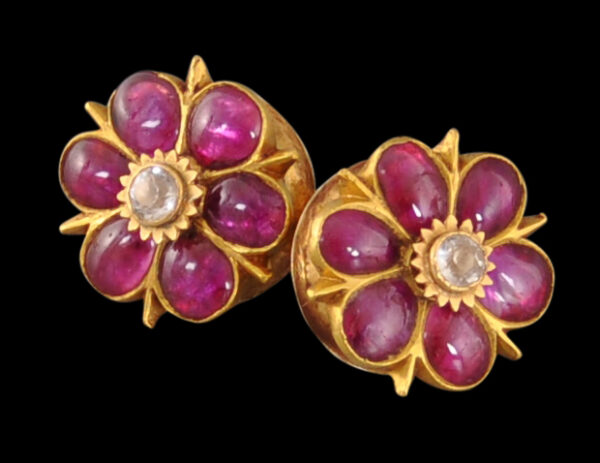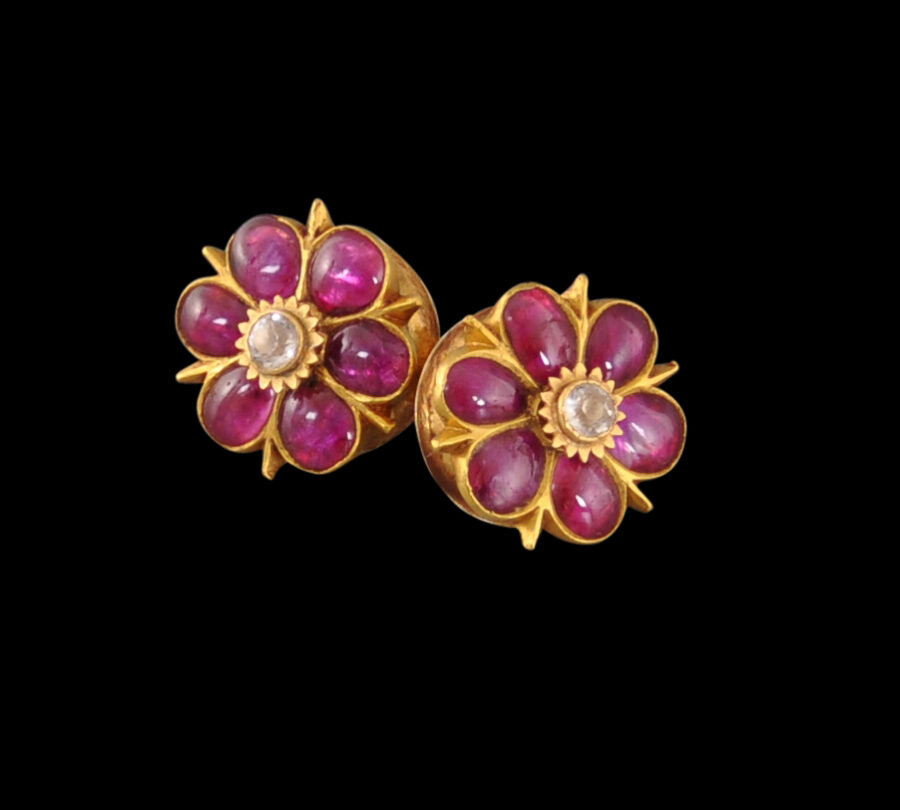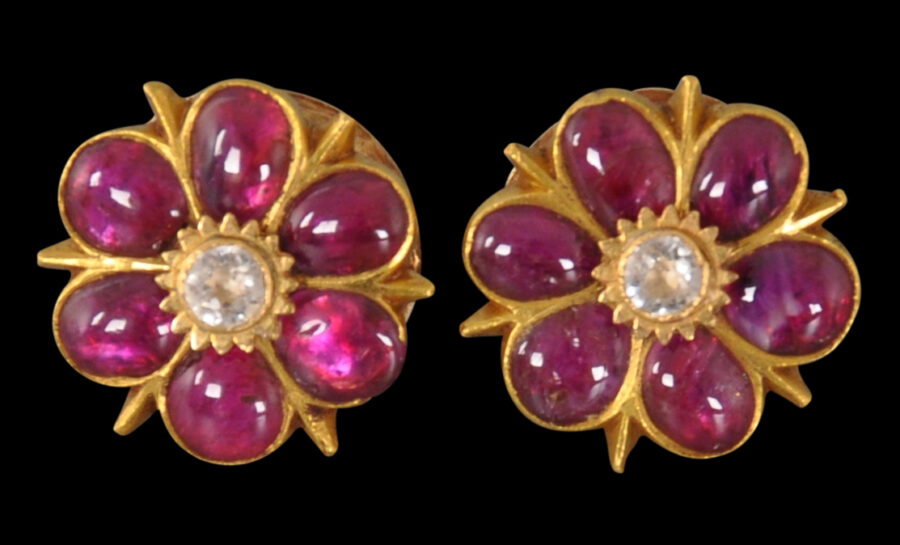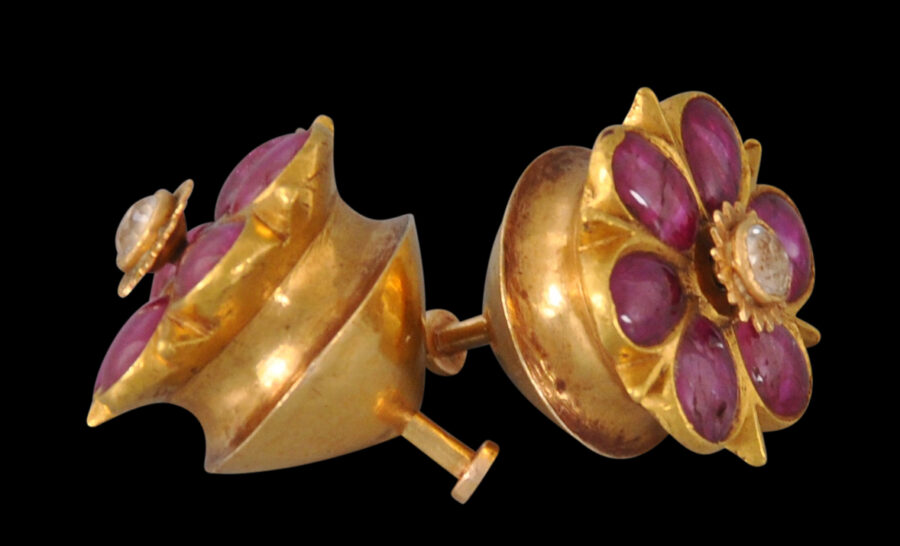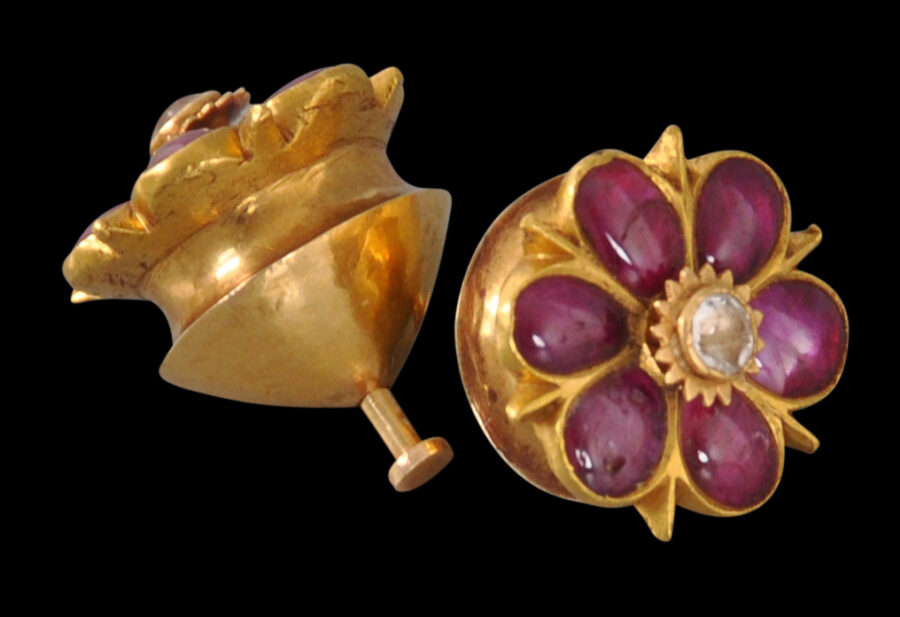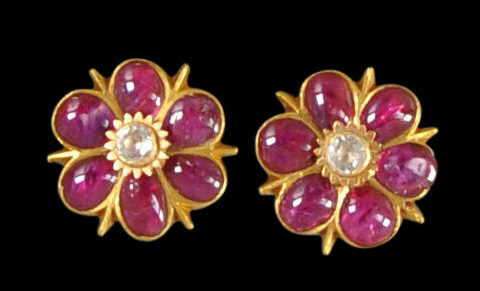Enquiry about object: 7017
Pair of Large South Indian Chettiar Gold, Diamond & Ruby Ear Studs (Thodu)
Chettiar Community, Tamil Nadu, South India 19th century
width: approximately 2.6cm, depth: 2.7cm, combined weight: 19g, combined weight of diamonds: 0.88 carats
Provenance
Chettiar family - private collection, South England
This superb pair of flower-form ear studs is of gold and is from Tamil Nadu in south India.
Each is set with six large cabochon rubies each and a central old-mine cut diamond weighing approximately 0.44 carats each.
Ear studs of precisely the same form set with rubies (but without diamonds) are in the Susan L. Beningson Collection and illustrated in Aitken (2004, p. 81).
Ear studs of this form were known as thodu (or todu) in Tamil Nadu – meaning an ear stud set with seven stones. They were worn through the ear lobe and alluded to the South Indian custom of wearing flowers in the ear instead of earrings. They were worn by both Hindu and Muslim women.
Ganguly (2007, p. 234) also calls this type of ear plug a kammal and says they are based on the lotus flower, and says that those with rubies only were preferred by Brahmin women, and those with diamonds were favoured by women of the Nattukottai Chettiar community. (Indeed, the immediate provenance for this pair is a Chettiar family now based in England.) The lotus is a symbol of the goddess Lakshmi, a deity particularly revered by the Chettiars.
The Chettiars were based in a semi-arid part of Tamil Nadu known as Chettinad. They were a merchant, trading and banking group who had family members across Asia thereby allowing them to develop multinational family-based trading and finance operations. They became very wealthy and built massive mansions in the district for their large extended families. Their business success declined with the Great Depression and the Second Wold War.
Such studs were designed to be worn only by women with distended ear lobes. The screwing mechanism to which the central diamond is attached would have allowed chains to be attached to allow more support to be given on account of the weight of each stud. These are not wearable today in a conventional, modern sense.
The pair here is in excellent condition.
References
Aitken, M.E., When Gold Blossoms: Indian Jewelry from the Susan L. Beningson Collection, Asia Society & Philip Wilson Publishers, 2004.
Bala Krishnan, U.R., & M.S. Kumar, Dance of the Peacock: Jewellery Traditions of India, India Book House Ltd, 1999.
Ganguly, W., Earrings: Ornamental Identity and Beauty in India, B.R. Publishing Corporation, 2007.


